Shinobi
What do you get when you take the original creator of Revenge of Shinobi, add the power of PlayStation 2 and a touch of Overworks goodness? The answer awaits inside.
| Version PS2 | Developer Overworks | Publisher Sega | Genre Action |
||||
By Kikizo Staff
Overworks' Shinobi, the namesake of Sega's classic 80s arcade title, retains the same basic design sensibilities of its decade-old forebear, while at the same time introducing a modicum of fresh new ideas to make it palatable in today's fickle marketplace. Linear progression, segmented levels and excruciating difficulty are familiar remnants of the venerable franchise, complemented by such modern videogaming amenities as CG cutscenes, dual-language voice-overs and of course, fully 3D worlds. Though straddling a fine line, Overworks has managed to craft an amalgam of both new and old, that despite its shortcomings, offers an experience that both newcomers and veteran fans can be pleased with.
The storyline tells the tale of Hotsuma, the leader of the Oboro Clan, who finds himself in the middle of an apocalyptic vision of Tokyo beset by Hellspawn. An earthquake has ravaged the city, an enigmatic Golden Palace has arisen in its center and demons are running amok. Ostensibly, these events are all the work of Hiruko, a sorcerer of immense power and by whose hand the world will fall should you fail. As the ninja Hotsuma, players make their way through a series of levels (1-A, 1-B, 2-A and so on), engaging and destroying the various demonic entities -- including the reanimated corpses of Hotsuma's former clansmen -- that inhabit the city and its surroundings.
True to form, this latest incarnation of Shinobi possesses the unique quality of being both incredibly fun and utterly frustrating at the same time. The early levels are simple enough (relatively speaking), but these only serve to lull the player into a false sense of security, as the second half of the game ups the difficulty level considerably. Players will fall to their doom mere feet from the end of a level; die at the hands of swarms of enemies, or better yet, be pummeled to within an inch of your life, only to escape and then die, you guessed it, mere feet before the end of a level. And with only a single life, death ensures that you'll have the pleasure of playing through the entire level over from the beginning. Its perhaps a testament then, that despite these annoyances you'll continue playing simply because when the game isn't bringing you to the verge of a nervous breakdown, it is a great deal of fun.
Central to the fun factor is the emphasis on combat. In fact, not only is bloodshed encouraged, but it's downright vital in order to stay alive. You see, Hotsuma wields Akujiki, a powerful sword that absorbs Yin from defeated foes. Go too long without killing an enemy, however, and the sword will absorb the life and soul of Hotsuma. And well, that just won't do, now will it? Additionally, many areas are sealed off by the so-called Kekkai Fu -- talismans that block your path -- which disappear only once you've defeated all the enemies in an area or destroyed the floating stone pillars found therein. As mentioned previously, combat, though repetitive, is highly enjoyable, thanks largely to the moves at the player's disposal.
Not only can Hotsuma run along walls, throw paralyzing shurikens and perform devastating ninja magic, but he can also execute what is known as a stealth-dash. Doing so allows Hotsuma to move in the blink of an eye, leaving a blue silhouette where he stood previously, thereby confusing enemies and leaving them open to consecutive attacks. Another vital ability is the so-called 'Tate combo.' Killing four or more enemies within a limited period of time will trigger a short cutscene, wherein, after a second or two, all the enemies killed will be splayed apart where Akujiki clove through them. Other than the macabre satisfaction of watching your foes literally fall to pieces, the tangible benefit of performing Tate combos is that doing so yields three times more Yin than normal, thereby satiating Akujiki's hunger more quickly. Also, with each successive kill, Akujiki's damage potential is momentarily increased, a technique that proves most useful against many of the game's bosses.
Shinobi, for better or worse, possesses fantastic artistic direction. Notable highlights of which include Hotsuma's lithe, acrobatic animations; the serpentine movement of his scarf and some great enemy designs, in stark contrast to the drab, almost lifeless environments in which Hotsuma and company find themselves. That said, the sparse geometry, repetitive textures and minimal graphic flash do ensure that load times are kept to the bare minimum, and considering that you'll be dying often in the latter stages of the game, this is perhaps a mixed blessing. A solid, if comparatively bare bones engine that gets kudos for keeping the framerate high and the load times low.
In terms of aural composition, Shinobi offers a concoction of uptempo tracks that while not entirely befitting of the source material, keep the pulse racing and adrenaline levels high. Intriguing to say the least, are a handful of tracks that seem to make use of traditional Japanese instrumentation combined with techno-style beats. The techno I could live without, and it would've been a nice change of pace if the game featured pure Japanese instrumental tracks, but what's there is passable. Anime fans will be pleased to note that cutscenes can be viewed with English or Japanese voices (with subtitles).
Whether or not classic titles should be revamped for the current generation is a debate that'll likely rage for many a year. Game design has progressed a great deal from the early days, and with it so have gamers' expectations, perhaps unreasonably so. Which is why revamping older titles is a tricky business indeed. Overworks' incarnation of Shinobi will not attain the 'classic' status of other titles in its lineage, but it is a solid action title, that, frustration aside, is a lot of fun to play.
| ||||||||||||
|
| Video Coverage (Latest Videos & Video FAQ) | |||
| PLEASE DO NOT DIRECT LINK TO ANY MEDIA FILE ON KIKIZO | |||
| Description | Dur. | Size | Details |
| Footage from the PlayStation2 version of Shinobi - cool. | 2.10min | 7.97MB | MPG |

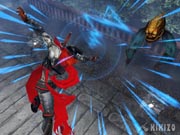
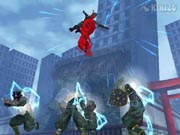

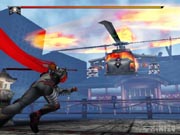
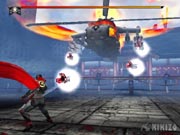

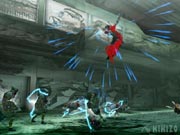
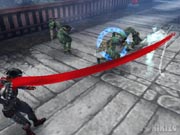
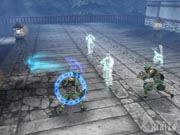





 Satoru Iwata Video Interview - the late Nintendo president spoke with Kikizo in 2004 as 'Nintendo Revolution' loomed.
Satoru Iwata Video Interview - the late Nintendo president spoke with Kikizo in 2004 as 'Nintendo Revolution' loomed. Kaz Hirai Video Interview - the first of Kikizo's interviews with the man who went on to become global head of Sony.
Kaz Hirai Video Interview - the first of Kikizo's interviews with the man who went on to become global head of Sony. Ed Fries Video Interview - one of Xbox's founders discusses an epic journey from Excel to Xbox.
Ed Fries Video Interview - one of Xbox's founders discusses an epic journey from Excel to Xbox. Yu Suzuki, the Kikizo Interview - we spend time with one of gaming's most revered creators.
Yu Suzuki, the Kikizo Interview - we spend time with one of gaming's most revered creators. Tetris - The Making of an Icon: Alexey Pajitnov and Henk Rogers reveal the fascinating story behind Tetris
Tetris - The Making of an Icon: Alexey Pajitnov and Henk Rogers reveal the fascinating story behind Tetris Rare founders, Chris and Tim Stamper - their only interview? Genuinely 'rare' sit down with founders of the legendary studio.
Rare founders, Chris and Tim Stamper - their only interview? Genuinely 'rare' sit down with founders of the legendary studio. The History of First-Person Shooters - a retrospective, from Maze War to Modern Warfare
The History of First-Person Shooters - a retrospective, from Maze War to Modern Warfare